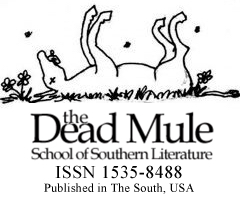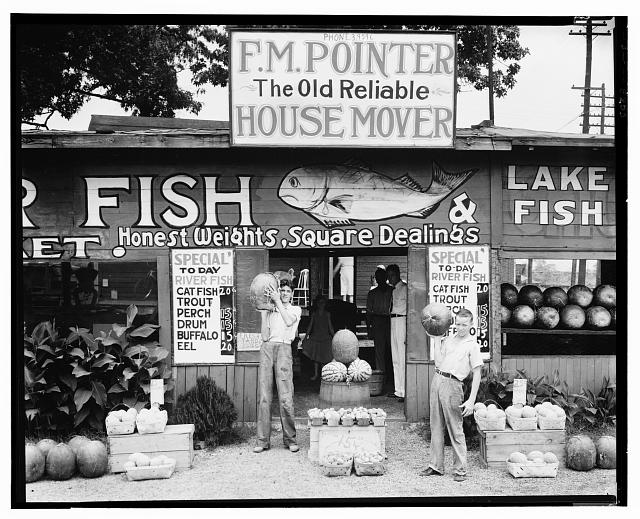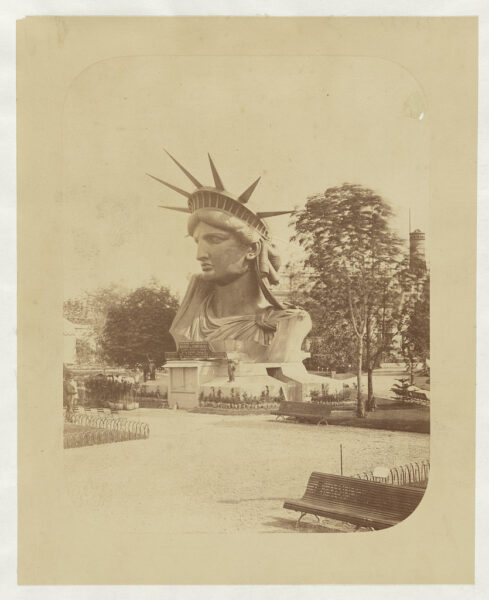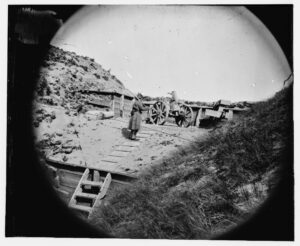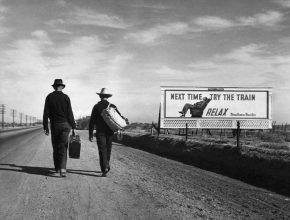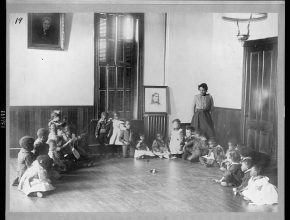neighbors surmised that Abner Murray bought the parrot for his niece.
His law practice was on the coast, and they reasoned that some sailor had
returned from a voyage with it to sell. Why Abner thought its vocabulary
suited to his old-maid niece, Miss Essie, could not be surmised.
Ever perverse, Miss Essie had taken to the bird, and “Pol” became a
fixture of her household. On warm days, he was to be seen in his cage, on a
pedestal stand, on the back porch. At night, she carried his covered cage up to her bedroom. She liked to hear the clucking noises he made deep down in his throat. She taught Pol the proper parts of “Polly Wolly Doodle All Day,” replete with a fair mimicry of her own breathless lift between words.
Pol heightened the neighborhood’s awareness of Miss Essie as a
“character.” For many years, whenever she’d needed help, she rang the huge dinner bell hanging over the back porch (though no one could remember it ever being used to summon people to eat).
It would bong for a good ten minutes, and, in accordance with country etiquette, the neighbors up to three miles away would answer the distress signal. From their point of view, the summons was for trivial matters-when Miss Essie’s companion, Rowena Smith, didn’t get home from a foraging expedition early enough to suit her; when a cow broke out of the pasture; when her ancient Essex had a flat tire; when somebody “stole” her milk pail; when she couldn’t get the pump primed . . . .
Now these little episodes were more “dramatic”–Pol squawked and called for help as soon as Miss Essie or Rowena rang the bell. He truly was quite piercing, and Miss Essie learned to insert cotton in her ears before she gave him the signal to cut loose.
The side porch that connected the main part of Miss Essie’s house with
the kitchen area faced toward the Litchfield Patterson place, so the
Pattersons received the greatest benefit from Miss Essie’s dinner bell and
parrot. After a bell-ringing, Mrs. Patterson would declare: “I don’t know
what that woman is thinking of. She must not ever have heard of Peter and
the wolf.”
The Patterson child, nicknamed “Miss Bird,” was determined to get a
close-up look at a real bird. Entranced with the idea of this creature, she
infuriated her no-nonsense father by chanting, ever faster, in mimicry of
Miss Essie’s style, “Bell-ring, -Pol-call, -peo-ple-come; -bell-ring, -Pol-call, -peo-ple-come!”
The community did once get a little of its own back. Miss Essie had, as
always, exacted a kiss on the mouth as the bribe for letting Pol out of his
cage that morning. Ancient and crotchety, he had perhaps decided that enough was enough. He bit his mistress on the nose and wouldn’t let go. Rowena couldn’t break his grip, so she had turned to Bell to summon help, and everyone had scrambled to the rescue.
“Now, Miss Essie,” Litchfield Patterson told her, in great solemnity of
tone and with much commiseration, “I’ve heard tell-you probably have, too – a parrot won’t let go until it thunders.”
Miss Bird was instantly into correction: “No, Daddy, it’s a terrapin,
not a parrot, that won’t let go until-”
Her mother grabbed her by the arm, stepped on her foot, and shushed her.
At any rate, when the bell stopped, Pol was soothed down enough to
release his hold on the proboscis.
When Mrs. Patterson did her accustomed duty and deposited Miss Essie at Dr. Mack’s office in town, the woman grudgingly admitted: “My-par-rot-bite-me!-”
For months, all the local wags greeted Dr. Mack with, “Hey, Doc, cured
any parrot bites lately?”
Back home afterwards, Mr. Patterson stated unequivocally: “Old Pol’s
beak rivals his owner’s. That’s probably what the ruckus was about in the
first place!”
He and his wife laughed and laughed, though she was cautionary: “Now
Litchfield! You shouldn’t say such things in front of our Little Pitcher.”
Miss Bird laughed, too, but she secretly vowed to measure the two noses
in question. She was a stickler for facts.
